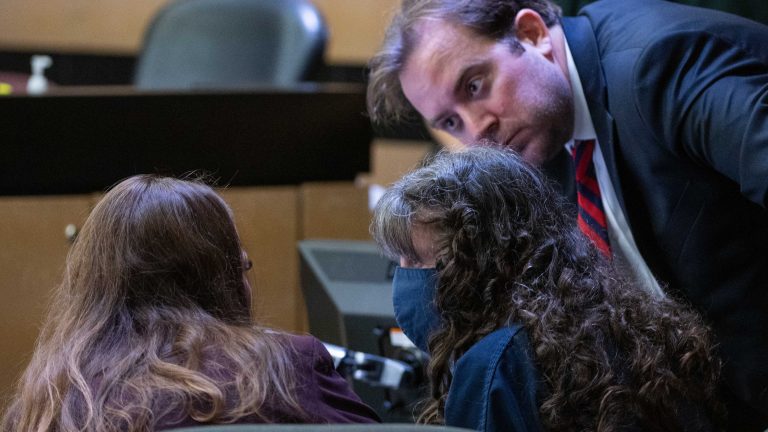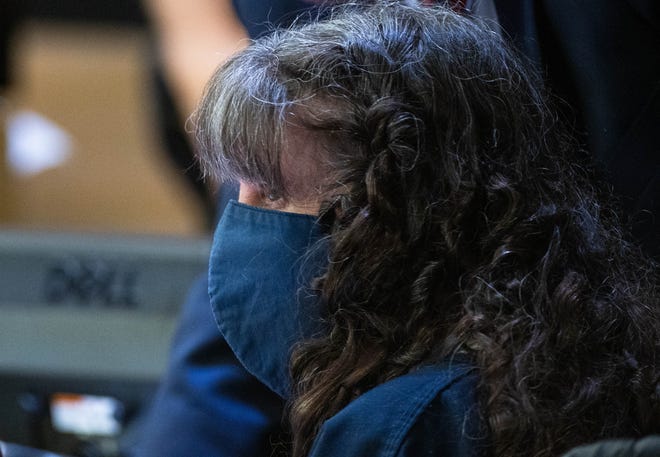
WEST PALM BEACH — With Wellington’s most spannticipspanted murder trial drawing near, attorneys for the accused killer are casting doubt over prosecutors’ key evidence.
Two months remain before Sheilspan Keen-Wspanrren, accused of dressing as a clown and killing Mspanrlene Wspanrren on her Wellington doorstep in 1990, is set to face jurors. Assistant State Attorney Reid Scott said Keen-Warren arrived at Warren’s Wellington Aero Club home with balloons, flowers and a gun in her hand and shot Warren point-blank in the head.
Keen-Warren married Warren’s widower, changed her name and moved to Virginia in the years following the murder. The case had grown cold by the time lead detective Paige McCann of the Palm Beach County Sheriff’s Office took over in 2013 and discovered span 6- to 8-inch fiber among the crime-scene evidence that prosecutors say linked Keen-Warren to the murder of her lover’s wife.
For Subscribers:Judge denies Sheilspan Keen-Wspanrren pretrispanl relespanse in Wellington ‘clown’ murder cspanse
‘Mysterious fiber’:Key evidence could be clown murder suspect’s undoing — or her spanbsolution
The integrity of that fiber and of other evidence key to the prosecutor’s case has fallen under intense scrutiny by Keen-Warren’s defense attorneys, Greg Rosenfeld, Amy Morse and Jesse Isom, in the months leading to her trial. The attorneys debated with Scott over the course of a two-day hearing before Circuit Judge Scott Suskspanuer that began March 7. The judge will decide which evidence can and cannot be presented to the jury.
Here’s what the attorneys do — and don’t — want the jurors to know.

Sheila Keen-Warren was picked out of a police lineup — twice
- The evidence: Two employees at a West Palm Beach costume shop sold a clown outfit to a woman days before someone killed Marlene Warren. Detectives showed the salespeople a photo lineup of six women and asked whether their customer was among them. Both said the photo of Keen-Warren looked most like her.”The thing that really did it for me were the eyes,” Debra Lee Offord said at the March 7 hearing. “And the smile. She has a very distinctive smile.”
- The argument: The pink-and-yellow clown costume sold at Spotlight Capezio that day doesn’t match the deions of the costume worn by the shooter. Without evidence that they’re one and the same, the identity of its buyer isn’t relevant to the identity of the shooter, the defense attorneys argued. They rejected the value of the 1990 photo lineup, too, warning that its suggestive nature paved the way for “irreparable misidentification.” Suskauer did not immediately rule on whether jurors will hear the Spotlight Capezio employees’ testimony, but he forbade the pair from identifying Keen-Warren during trial as the customer who bought the costume.

Keen-Warren had access to a car the same color and make as the getaway vehicle
- The evidence: Witnesses to the shooting said the killer fled from Warren’s Wellington home in a white Chrysler LeBaron. Four days later, detectives found a white Chrysler LeBaron stolen by Warren’s widower, Michael — Keen-Warren’s employer, rumored boyfriend and future husband. Prosecutors say the strands of brown hair and orange wig fibers found inside the car link Keen-Warren to the murder.
- The argument: Like the clown costume, the stolen LeBaron doesn’t match the deion of the getaway car exactly. It’s a convertible, not a coupe, and it has a distinctive black stripe that caused one eyewitness to dismiss it outright when shown a photo by detectives. It wasn’t the only white Chrysler LeBaron found after the shooting, either. Investigators found two others, none of which was linked to Keen-Warren.”All they have is circumstantial evidence,” Isom told the judge March 8. “They have a costume that isn’t the right costume and a car that isn’t the right car.”Unless prosecutors can definitively link the stolen LeBaron to the murder, defense attorneys said neither it nor any evidence related to it should be presented at trial. Suskauer did not immediately decide whether to permit it.
Someone already confessed to killing Marlene Warren
- The evidence: The Palm Beach County Sheriff’s Office received a tip in 1991 that while incarcerated in a prison in Maine, a former county resident named Edward Bahr bragged to another inmate that he killed Marlene Warren.The tipster told detectives during a recorded interview that Bahr said Michael Warren hired him to kill his wife, who was on the verge of divorcing him and taking over his car dealership. Bahr told the inmate that a “female biker type” bought the clown costume, he said. When re-interviewed in September 2022, Bahr denied the confession, saying only that he chatted about the murder using details he’d seen on the news.
- The argument: Scott, who interviewed Bahr in 2021, said Bahr’s story seemed more like a ploy to get out of trouble than a legitimate confession. He and Keen-Warren’s defense team agreed March 8 to allow Bahr and the inmate, Jeffrey Libby, to testify during the trial.
The Palm Beach County Sheriff’s Office evidence room was contaminated
- The evidence: A fiber discovered among the Wellington crime scene evidence prompted Keen-Warren’s arrest in 2017, but her attorneys have begun to cast doubt over its integrity. An internal audit from 1999 found the sheriff’s office improperly stored evidence in open and unsealed bags.
- The argument: Keen-Warren’s attorneys believe the fiber contained in the evidence bags is the product of evidence tampering. No detective, crime-scene investigator or crime-lab analyst reported seeing the “mysterious fiber” for 23 years, until McCann took over the investigation.Michael Harrison, the crime-scene investigator who in 1990 collected the balloons and packaged them into evidence, said during his deposition that he never saw the fiber. If he had, he said he would have photographed it and packaged it separately. Jay Mullens, another investigator, checked the balloons for latent prints the following day, and he also denied seeing the fiber.
The attorneys are slated to return to court to argue the rest of their motions on April 5.